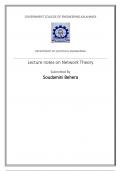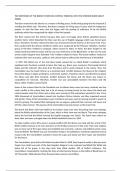College aantekeningen
branch
- Vak
- Instelling
A network theory document explores principles and concepts related to networks, which can include social networks, computer networks, or any interconnected system. It covers topics like nodes, edges, connectivity, and network dynamics, providing insights into the structure and behavior of complex s...
[Meer zien]





